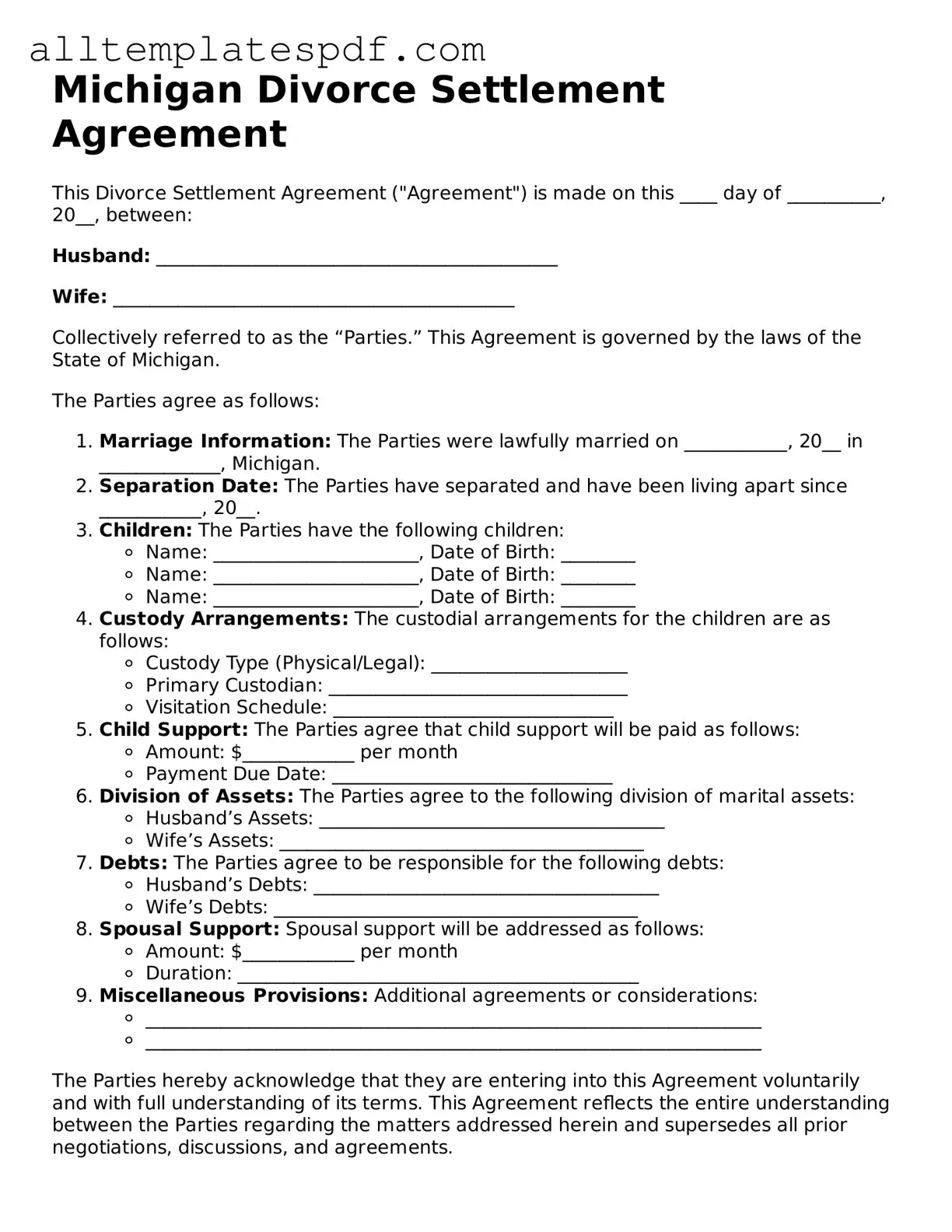Filling out the Michigan Divorce Settlement Agreement form can be a daunting task, and many individuals make common mistakes that can complicate the process. One frequent error is failing to provide complete information. Each section of the form requires specific details, and omitting any information can lead to delays or even rejection of the agreement.
Another mistake is not being clear about asset division. Couples often underestimate the importance of accurately listing all assets and debts. This includes bank accounts, real estate, and personal property. If one party fails to disclose an asset, it can lead to disputes later on, undermining the fairness of the settlement.
Inaccurate valuations of assets can also pose significant problems. When individuals do not properly assess the value of their property, it can result in one party receiving less than their fair share. It is crucial to gather appropriate documentation, such as appraisals or bank statements, to ensure that all valuations are accurate and fair.
Another common oversight involves the lack of clarity in child custody and support arrangements. Parents must outline their plans in detail, including visitation schedules and financial responsibilities. Vague language can lead to misunderstandings and conflicts after the agreement is finalized.
Many people forget to address tax implications related to asset division. Certain assets, such as retirement accounts, may have tax consequences that should be considered during the settlement process. Ignoring these implications can lead to financial surprises down the road.
Additionally, some individuals do not fully understand the implications of spousal support. It is essential to clearly define the terms of any alimony, including the amount and duration. Leaving this aspect ambiguous can lead to disputes and potential legal battles in the future.
Not seeking legal advice is another mistake that many make. While it is possible to fill out the form without an attorney, having professional guidance can help avoid pitfalls and ensure that the agreement complies with state laws. Legal counsel can provide insights that individuals may not have considered.
Failing to review the completed form before submission is also a common error. It is vital to double-check for any mistakes or inconsistencies. A thorough review can catch errors that could otherwise delay the divorce process.
Moreover, individuals sometimes neglect to keep copies of the signed agreement. Maintaining a record of the finalized document is crucial for future reference, especially if disputes arise later. Without a copy, it may be challenging to enforce the terms of the agreement.
Finally, many overlook the importance of ensuring both parties understand the agreement. Both spouses should fully comprehend the terms and implications of the settlement. Open communication can prevent future conflicts and foster a smoother transition into post-divorce life.
